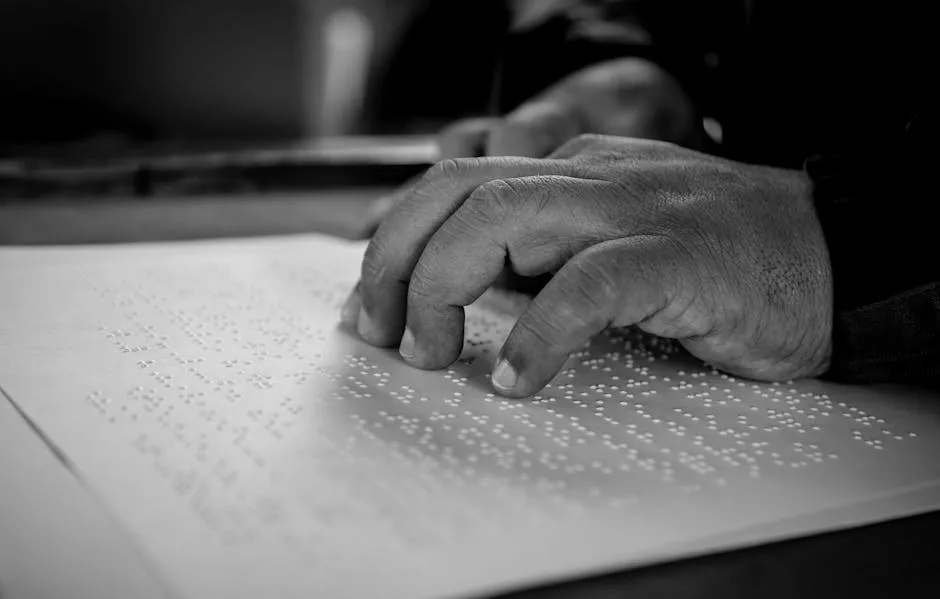
Why Do Some People Have Synesthesia (Mixing Senses)?
Introduction
Synesthesia is a fascinating neurological phenomenon. It occurs when stimulation of one sensory pathway leads to involuntary experiences in another. Imagine tasting a lemon and simultaneously seeing a burst of yellow! This blending of sensory experiences is not just an odd quirk; it reveals much about how our brains process information. For some, this unique way of perceiving the world is a lifelong experience. But why do some people have synesthesia, while others do not? This question has intrigued researchers and curious minds alike.
Understanding the reasons behind synesthesia can provide insights into this intriguing condition. Why do some people have synesthesia (mixing senses)
Understanding Synesthesia
What is Synesthesia?
Synesthesia is often described as a condition where one sense is simultaneously perceived as if another sense were triggered. For instance, when a synesthete hears music, they might also see colors, or they may associate certain letters with specific tastes. This involuntary merging of the senses can result in a rich tapestry of experiences that seem completely normal to those who have it. The most common form is grapheme-color synesthesia, where letters or numbers are linked to specific hues.
To truly appreciate the beauty of synesthesia, consider enhancing your own creative space. A Watercolor Paint Set can help you explore your own sensory creativity. Who knows, you might just find your own colors dancing to the music!
Types of Synesthesia
Synesthesia takes on many forms, and here are some of the most prominent:
- Grapheme-Color Synesthesia: This is where individuals associate colors with letters or numbers. For example, the letter “A” might always appear as red, while “B” could be blue. Each synesthete has unique associations, making it a personalized experience.
- Chromesthesia: Here, sounds trigger visual experiences. A synesthete might hear a piano note and see a swirl of colors in the air. This type often adds a whole new dimension to musical experiences, enhancing creativity.
- Lexical-Gustatory Synesthesia: This rare form occurs when certain words evoke specific tastes. Imagine saying “apple” and instantly tasting a crisp slice of the fruit! Synesthetes with this experience may enjoy a deliciously varied vocabulary.
There are also less common types, like auditory-tactile synesthesia, where sounds produce physical sensations, and ordinal linguistic personification, where ordered sequences like days of the week are associated with personalities or genders. Each of these types underscores the incredible diversity of synesthetic experiences.
Research suggests that the neural basis of synesthesia involves increased connectivity between sensory regions in the brain. This heightened interaction allows for the unique perceptual experiences that synesthetes enjoy. Understanding why some people have synesthesia offers insights into the complex interplay of senses and cognition, revealing just how intricate our brains truly are.

The Mechanism Behind Synesthesia
Brain Structure and Function
Synesthesia is a unique experience resulting from the brain’s intricate wiring. Research indicates that synesthetes, those who experience this phenomenon, have heightened connectivity between sensory regions. Studies using brain imaging techniques reveal that when synesthetes perceive a stimulus, multiple areas of the brain light up simultaneously. For instance, grapheme-color synesthetes often show activation in both the regions responsible for processing colors and those for letters or numbers.
The concept of “cross-activation” plays a pivotal role in understanding synesthesia. This refers to the situation where activation in one area of the brain leads to unintended activation in another. Imagine your brain playing a game of tag, where one region touches another, sparking unexpected sensory experiences. This cross-talk allows a synesthete to see colors when they read a word or hear music. Essentially, their brains are wired differently, intertwining sensory experiences in a delightful, albeit confusing, manner.
In grapheme-color synesthesia, for example, the visual cortex—the area responsible for seeing—interacts with the regions that process numbers and letters. This interaction leads to automatic associations; when presented with a letter, a synesthete might see a color flash in their mind. This cross-activation explains why synesthetic experiences feel so vivid and consistent for those who have them. The neural basis of synesthesia challenges our understanding of sensory perception, revealing the brain’s remarkable capacity for integration.

Genetics and Inheritance
The genetic component of synesthesia is fascinating. Research suggests that it runs in families, with an estimated 40% of synesthetes reporting a first-degree relative who shares the experience. This familial pattern indicates a potential hereditary link, making synesthesia a genetic anomaly rather than a random occurrence.
Studies also show that synesthesia appears more frequently in women than men, with estimates suggesting that women may be more likely to report their experiences. This observation has led scientists to investigate the genes involved, although the specific genetic markers remain elusive. Some researchers propose that variations in certain genes may influence the likelihood of developing synesthesia, but this area requires further exploration.
Interestingly, the prevalence of synesthesia varies across cultures, possibly influenced by linguistic and environmental factors. The nuances of language may shape the sensory experiences associated with letters and sounds, reinforcing the idea that synesthesia is not merely a biological phenomenon but also a cultural one.

Neuroplasticity and Development
Neuroplasticity—the brain’s ability to reorganize itself—plays a crucial role in the development of synesthesia. Many synesthetes first experience their unique sensory blending during childhood. During these formative years, the brain is exceptionally malleable, forming connections that may not persist into adulthood. As children grow, they often lose these connections, leading to a decrease in synesthetic experiences.
Research suggests that most children might experience some form of synesthesia before honing in on their dominant senses. For instance, a child might see numbers in colors or associate certain sounds with shapes. However, as they age, these connections may fade, resulting in the loss of synesthetic perception. This phenomenon nudges us to consider whether all humans possess a latent form of synesthesia that diminishes with time.
Recent studies indicate that early exposure to sensory stimuli can reinforce these synesthetic connections, making them more likely to persist into adulthood. The implication is that our experiences shape our neural pathways, highlighting the interplay between environment and biology in the development of synesthetic traits. As such, the exploration of synesthesia not only unveils the complexities of human perception but also invites us to appreciate the beauty of our brain’s adaptability.

Psychological and Cognitive Aspects
Enhanced Abilities
Did you know that synesthetes often ace memory and intelligence tests? Studies reveal a striking pattern: those with synesthesia frequently outperform their non-synesthetic peers. This isn’t just coincidence; it appears that their unique sensory wiring gives them an edge in cognitive tasks.
For example, a study published in Cognition found that grapheme-color synesthetes have quicker and more accurate responses when recalling information. Their ability to visualize colors while processing letters or numbers seems to enhance their memory retention. It’s like having a built-in mnemonic device! Imagine trying to recall a complicated formula and seeing it highlighted in vibrant hues.
Moreover, synesthesia fosters creativity. Many synesthetes gravitate towards artistic careers. Musicians, painters, and writers often report that their cross-sensory experiences inspire their work. Pharrell Williams, a renowned musician, describes how his auditory-visual synesthesia shapes his music. He creates melodies while visualizing colors, making his compositions a feast for both ears and eyes. This fusion of senses propels synesthetes into creative realms that others might struggle to access.
Additionally, synesthesia may lead to heightened sensory perception. Synesthetes can often discern colors or textures that escape the average person’s notice. This acute awareness allows them to connect more deeply with their surroundings, fueling their artistic endeavors.

Are you looking to tap into your inner artist? A Coloring Book for Adults can provide a creative outlet that encourages relaxation and exploration of colors in a whole new way.
Personal Accounts
Personal anecdotes from notable synesthetes add color to our understanding of this phenomenon. Take the famous author Vladimir Nabokov, for example. In his autobiography, he describes letters as having specific colors. The letter “A” might be red, while “B” could be blue. This vivid experience shaped his literary style, allowing him to weave intricate imagery into his narratives.
Musician Billy Joel also shares his experiences with synesthesia. He evokes tactile sensations while performing, feeling the music as a physical presence. This unique perception not only enriches his performances but also creates a deeper connection with his audience. Who wouldn’t want to feel a concert as much as hear it?
Svetlana Rudenko, a pianist, experiences music as textured images. She visualizes sound waves as shapes, which influences her playing style. This cross-modal experience aids her memory and enhances her teaching methods, providing a vivid learning environment for her students. Each note she plays becomes a sensory tapestry, bringing her music to life in ways that resonate beyond sound.
These personal accounts illustrate how synesthesia impacts creativity and perception. Synesthetes navigate the world through a rich sensory lens, transforming everyday experiences into extraordinary artistic expressions. Their stories remind us that perception is not a one-size-fits-all experience; rather, it is a kaleidoscope of interpretations that can enrich our understanding of art and cognition.

Cultural and Historical Context
Historical Perspectives
The understanding of synesthesia has evolved significantly over the centuries. Ancient philosophers like Pythagoras speculated about sensory connections, hinting at an early awareness of this phenomenon. Pythagoras himself reportedly experienced a form of synesthesia, associating musical tones with specific colors.
Fast forward to the 19th century, and synesthesia began capturing the attention of scientists. Francis Galton, a prominent figure in psychology, conducted studies on individuals who experienced this blending of senses. His work laid the groundwork for future research, highlighting a growing interest in the neurological underpinnings of synesthesia.
As we entered the 20th century, the perception of synesthesia shifted. It was often viewed as a quirky anomaly, relegated to the fringes of psychological study. However, the late 20th century saw a resurgence in interest. Researchers began to investigate the biological basis of synesthesia, focusing on the brain’s structure and connectivity. This transition marked a pivotal moment in the scientific exploration of synesthesia, as it was no longer dismissed as mere fantasy.
Today, cultural perceptions of synesthesia have come full circle. Once considered a peculiar oddity, it is now celebrated as a fascinating aspect of human diversity. Artists, musicians, and writers openly share their synesthetic experiences, enriching the cultural landscape. As our understanding of synesthesia deepens, it invites us to reconsider the boundaries of perception and creativity, showcasing the beauty of human experience in all its forms.

Synesthesia in Art and Literature
Synesthesia has sparked the creativity of many famous artists and writers. Vincent Van Gogh, the master of color, reportedly saw colors when he heard music. This unique perception infused his paintings with vibrant hues and emotional depth. Imagine a starry night where each twinkle is a note in a symphony! His work invites viewers to experience a sensory journey.
Another prominent synesthete is writer Vladimir Nabokov. In his autobiography, he describes letters as having distinct colors. The letter “A” might shimmer in red, while “B” dances in blue. This vivid perception influenced his literary style, enriching his prose with layers of meaning. His words are not just letters; they are tones in a grand symphony of language.
Even contemporary creators, like musician Pharrell Williams, use their synesthetic experiences to enhance their craft. Pharrell hears colors when he composes music, weaving a tapestry of sound and color. This ability allows him to create musical experiences that resonate on multiple sensory levels.
In literature, synesthesia often pops up as a theme. For instance, authors like Joanne Harris and Daniel Tammet weave synesthetic experiences into their narratives. They create worlds where colors evoke emotions, and sounds trigger vivid imagery. This creative exploration not only captivates readers but also provides insights into the diverse ways individuals experience the world.

Current Research and Future Directions
Ongoing Studies
Exciting research initiatives are underway to deepen our understanding of synesthesia. One notable project is MULTISENSE, led by Dr. Julia Simner at the University of Sussex. The goal of this project is to explore how synesthesia develops in children. Researchers aim to conduct large-scale studies in primary schools, assessing thousands of kids to identify conditions like grapheme-color synesthesia.
The MULTISENSE project will utilize simple tests, presenting children with colors linked to letters. This method helps determine if their associations remain consistent over time. Interestingly, early findings suggest that many children exhibit synesthetic traits before they fade as they age. Understanding this could pave the way for tailored educational strategies.

If you want to enhance your focus while studying or exploring these fascinating concepts, consider investing in Noise-Canceling Headphones. They can help you create the perfect environment for diving into the world of synesthesia without distractions!
Implications for Understanding Perception
Studying synesthesia holds profound implications for our understanding of sensory perception and cognition. Researchers propose that synesthesia may reveal how our brains integrate sensory information. This insight could reshape our understanding of how we process the world, highlighting the interconnectedness of our sensory experiences.
Moreover, synesthesia challenges the traditional boundaries of perception. It suggests that most people might possess some degree of synesthetic ability, albeit to a lesser extent. Exploring this phenomenon could enhance our appreciation for the diverse ways individuals experience reality.
The implications extend beyond mere curiosity; they touch on creativity, learning, and even mental health. By understanding synesthesia, educators can develop strategies to support students who perceive the world differently, ensuring that all learners thrive. This research not only adds depth to the study of human perception but also champions the beauty of neurodiversity in our society.

Conclusion
In conclusion, synesthesia is a captivating phenomenon where the blending of senses leads to unique perceptions. We explored how it manifests in various forms, such as grapheme-color synesthesia and chromesthesia. Significantly, this condition isn’t a disorder; it’s a distinct way of experiencing the world. Understanding synesthesia not only broadens our knowledge of human perception but also highlights the brain’s incredible complexity. As we continue to study this fascinating condition, we gain insight into how our senses interact, revealing the intricate tapestry of our cognitive processes. Embracing synesthesia helps us appreciate the diversity of human experiences, enriching our understanding of what it means to perceive the world uniquely.
FAQs
What causes synesthesia?
Synesthesia arises from various factors, including genetics and brain structure. Research indicates that certain genes might contribute to this phenomenon, as it often runs in families. Brain imaging studies show synesthetes have increased connectivity between sensory areas, which may lead to the involuntary blending of senses. This cross-talk in the brain allows for experiences like seeing colors when hearing sounds. While the exact mechanisms remain a puzzle, the interplay of genetic predispositions and unique brain wiring appears to be central to understanding synesthesia.
Is synesthesia a disorder?
No, synesthesia is not classified as a disorder. Instead, it is a unique way of experiencing the world. Those with synesthesia often enjoy their vivid perceptions and find them enriching. Many synesthetes view their condition as a gift, enhancing their creativity and sensory experiences. While some might find it distracting, most embrace their synesthetic experiences as part of their identity, contributing to a broader understanding of human perception.
Can someone develop synesthesia later in life?
Yes, although rare, individuals can develop synesthesia later due to specific conditions. For example, brain injuries, strokes, or the use of psychedelic drugs may trigger acquired synesthesia. These experiences can sometimes be temporary, but in some cases, they may lead to a permanent blending of the senses. The exact reasons for this transformation are still being researched, highlighting the complexities of our neurological pathways.
How can I know if I have synesthesia?
Identifying synesthesia involves paying attention to your sensory experiences. If you consistently associate specific colors with letters or numbers, or if sounds evoke certain tastes, you might be experiencing synesthesia. Many synesthetes report that their associations are automatic and stable over time. Online tests, such as the Synesthesia Battery, can help you determine if you have consistent sensory associations.
Are there treatments for synesthesia?
Currently, there are no treatments for synesthesia, as it is not considered a medical condition. Most synesthetes appreciate their unique experiences, and many find comfort in connecting with support networks. These communities can help individuals who feel isolated due to their perceptions. If you struggle with your synesthetic experiences, consulting a mental health professional may provide valuable insights and coping strategies.
Please let us know what you think about our content by leaving a comment down below!
Thank you for reading till here 🙂
All images from Pexels




